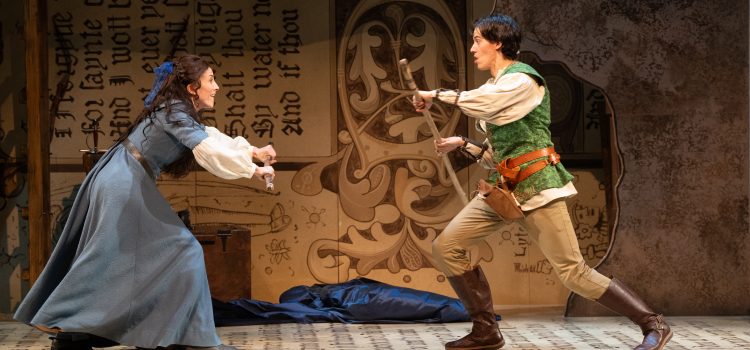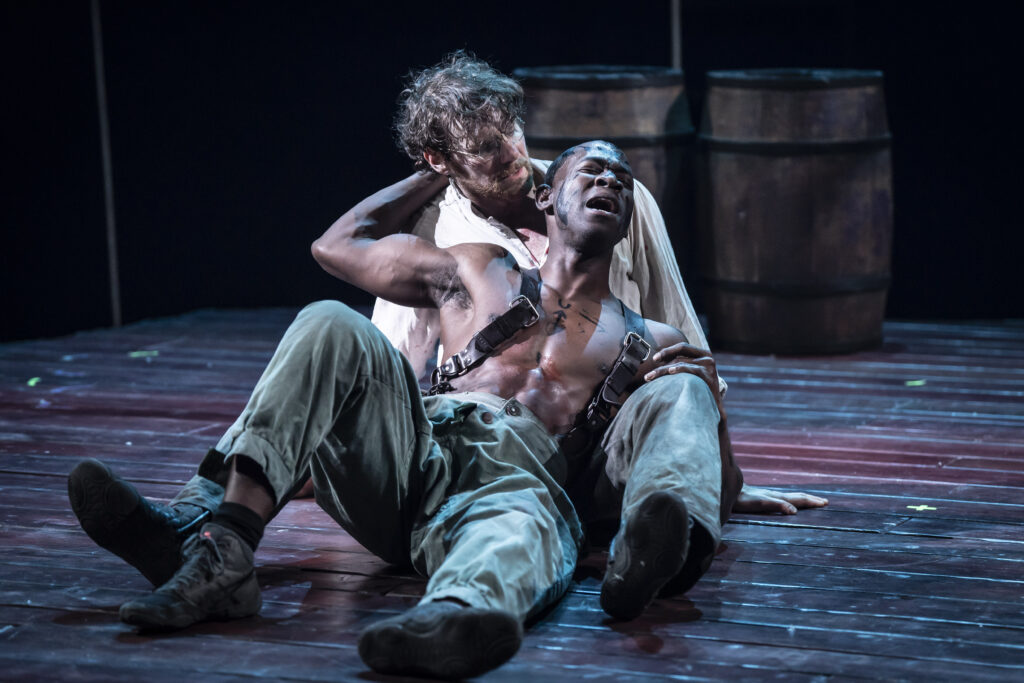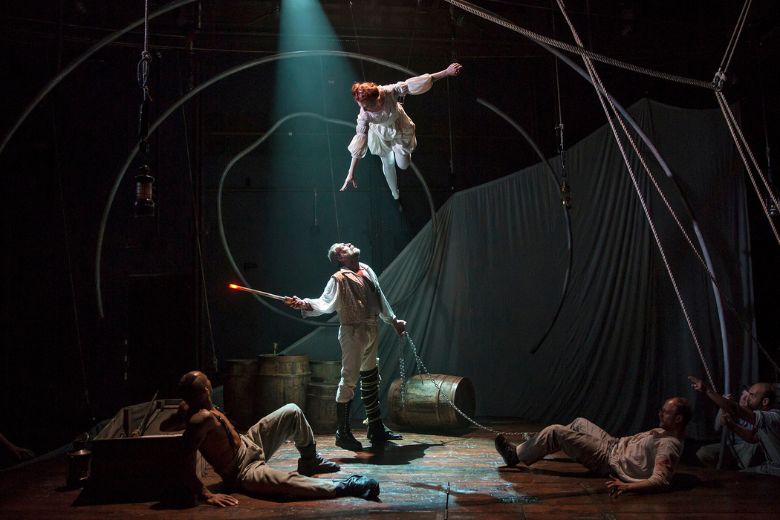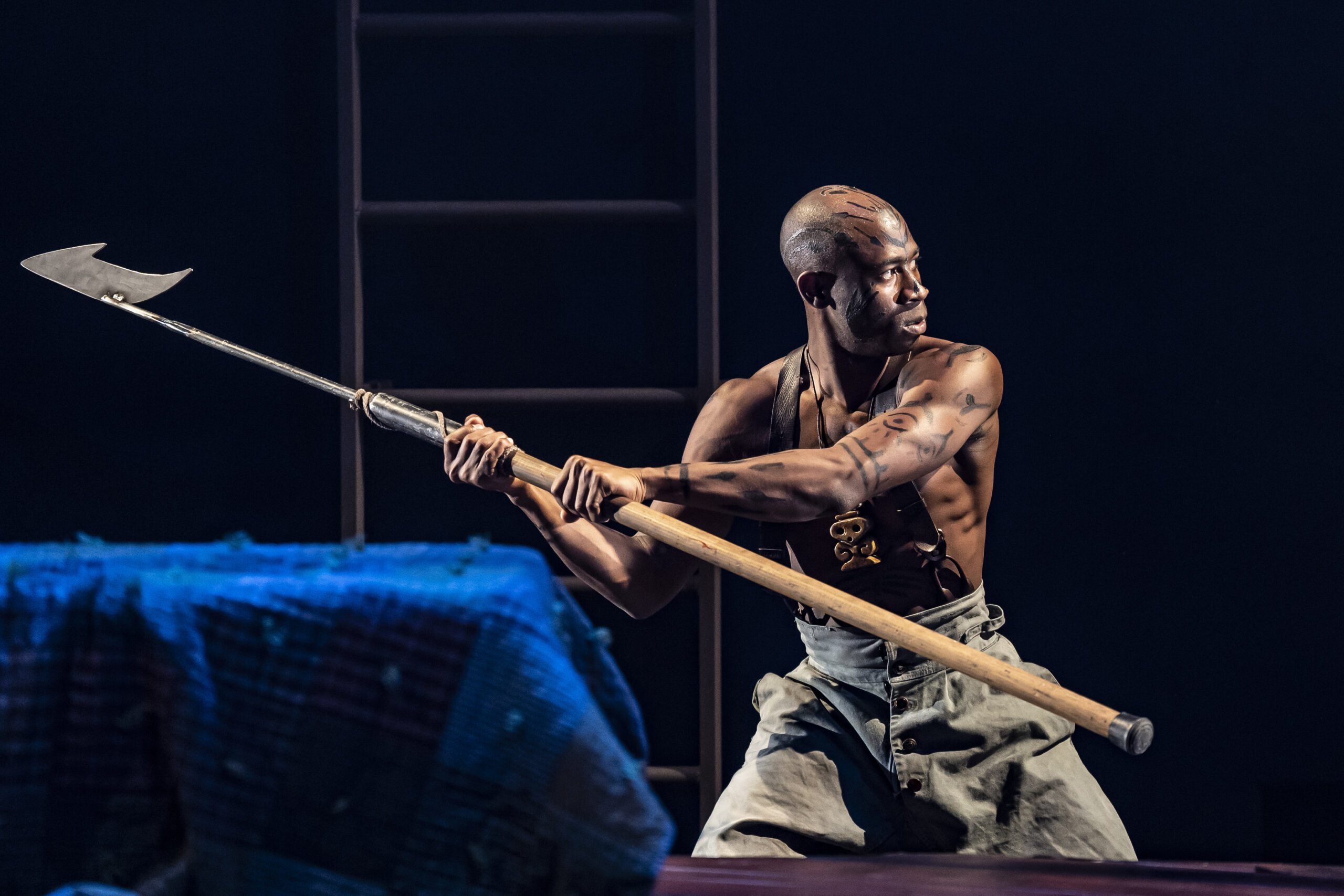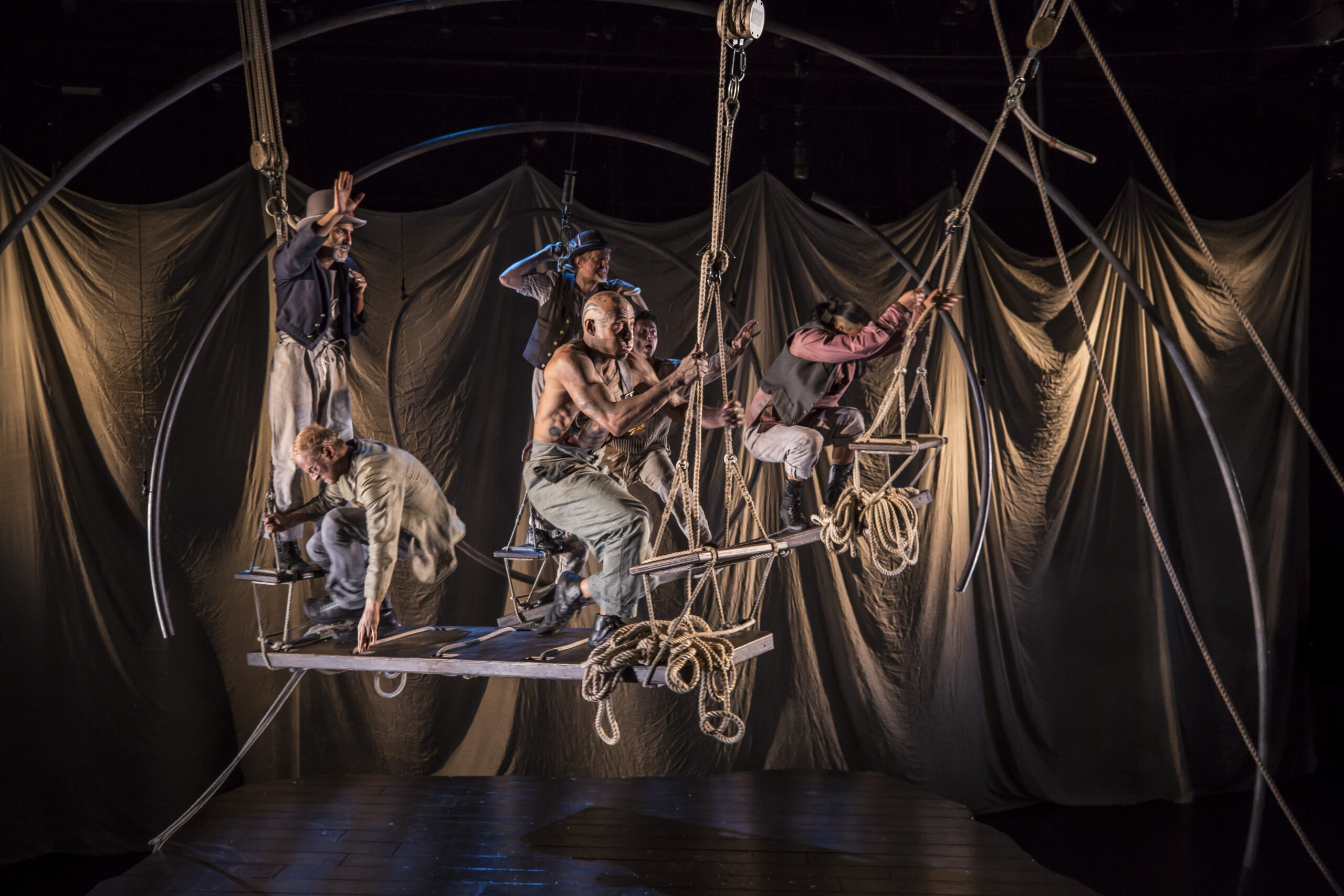By Lynn Venhaus
Mix the Marx Brothers, Monty Python and Mel Brooks in a blender, and you have the fizzy potion that is fueling a crackerjack ensemble in the rollicking “Sherwood: The Adventures of Robin Hood” on the Repertory Theatre of St. Louis’s mainstage.
Through merry mischief and dazzling derring-do, this jaunty, physically fit ensemble works very hard to entertain and summon their mighty skills to keep their pace zippy and their swashbuckling crowd-pleasing.
Staged with zesty agility by director Kate Bergstrom, some of the feats are astounding. How do they manage arrows hitting their targets without flying over the heads of the audience? It’s an incredible illusion involving sleight-of-hand, I imagine. (And they’re not divulging this magic trick).
The fight choreographers Rachel Lee Flesher and Zachariah Payne did extraordinary work to make it authentic – and whoever worked on archery, too.
With a nifty Sherwood Forest set framed as a folk tale, we’re immersed back to 1194 Nottingham, England. Scenic designers Lindsay Mummert and Courtney O’Neill have created a majestic oak tree as the focal point, and it serves the action well.

Part history, part myth, the legend of Robin Hood, fighting for the common man, has endured for more than 700 years and been fictionalized in countless ways (even the Rat Pack, aka 1964’s “Robin and the Seven Hoods” starring Frank Sinatra as “Robbo,” set gangster-style in 1930s Chicago!).
With so many movie and TV adaptations, nearly everyone has seen a version – Douglas Fairbanks’ silent movie in 1922, Errol Flynn’s finest hour in 1938’s “The Adventures of Robin Hood,” Disney’s animated feature in 1971, miscast Kevin Costner’s “Robin Hood: Prince of Thieves” in 1991, Mel Brooks’ spoof “Robin Hood: Men in Tights” in 1993, and then millennial efforts from Ridley Scott in 2010 with Russell Crowe and Cate Blanchett, and another same-titled one “Robin Hood” in 2018, albeit younger performers, starring Taron Egerton, among them.
So, you likely know the story – maybe not beyond “stealing from the rich and giving it to the poor,” but playwright Ken Ludwig incorporates the 12th century history – in fact, the first act gets bogged down with the backstory.
However, the second act rebounds with vigorous swordplay as our heroes endure the slings and arrows of an outrageous ruler (greedy Prince John) and his henchman (including sycophants Sheriff of Nottingham and Sir Guy of Gisbourne). Like their rogue counterparts in France as embodied by “The Three Musketeers,” the rascals are “all for one, one for all.”
Ludwig, known for such farces as “Lend Me a Tenor,” “Moon in Buffalo,” and “Baskerville: A Sherlock Holmes Mystery,” produced this play in 2017. He has infused some contemporary behavior so as not to have the action mired in the past (and off-putting to today’s sensibilities).
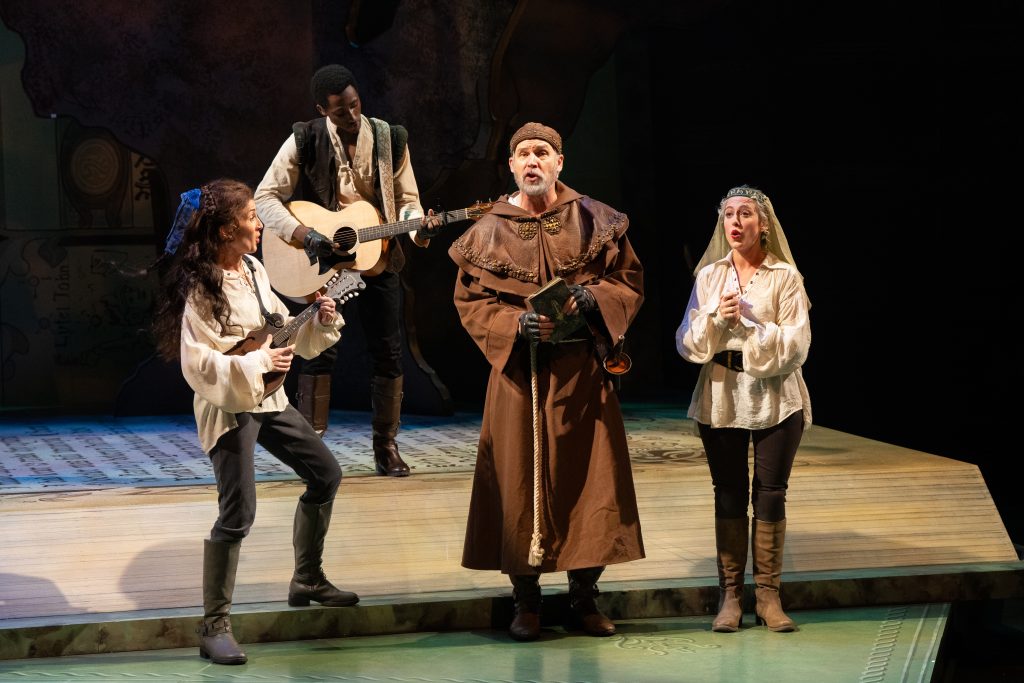
As Robin grows up from playboy to a man with a conscience, he and his band of outlaws are committed to social justice, their eyes opened by seeing the monarch’s cruelty and corruption through several characters.
Delivering both the swagger and the rebel with a cause, Louis Reyes McWilliams reveals himself to be a noble lad after his aimless youth. Although he’s dashing in his romantic endeavors as well, he’s clearly met his match in his spunky childhood pal Maid Marian, for she is no push-over.
What’s refreshingly modern is that Marian is not a damsel in distress. Rather, Jayne McLendon plays her as just as fleet-footed and even more of a sharp-shooter than her male peers. It’s a delightful rendering, and she has terrific chemistry with McWilliams.
Costume Designer Dottie Marshall Englis, splendid at creating period pieces that offer ease of movement, has superbly outfitted this lively bunch so they can run, jump and fight without pesky restrictions.
The characters’ camaraderie is this play’s strong suit, and their stamina is impressive – they had to be athletic and graceful throughout to execute their game plans.
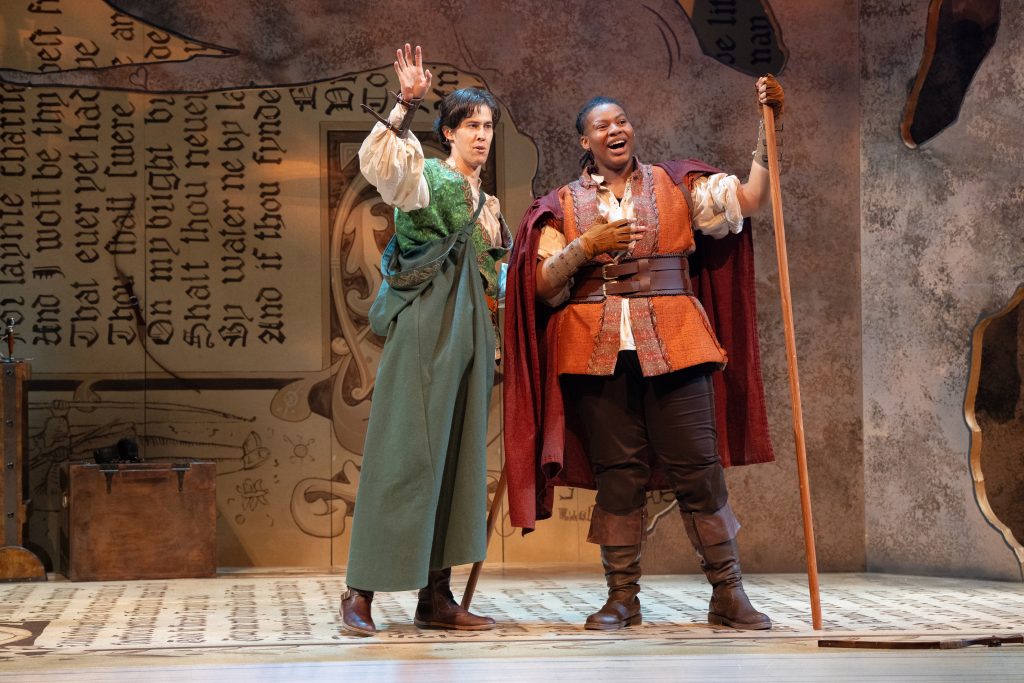
Ever-reliable Michael James Reed, always first-rate and masterful as Friar Tuck, ties everything together as a trustworthy confidante, acting as the narrator and breaking the fourth wall to alert the audience to what’s happening.
One of the show’s highlights is the audience involvement, as they’re encouraged to cheer and boo, some getting called into action. Bergstrom focused on the joy, the sense of fun, this story contains.
Other performance standouts include Fabiola Cabrera-Davila as Deorwynn, a feisty peasant avenging her farmer father’s unfortunate death due to the acting king’s tyranny. Her courage inspires others to be dedicated to their mission, especially Robin and a smitten Little John, robustly embodied by CB Brown. (They look imposing but are really a teddy bear).
Oriana Lada is a noteworthy supporting player, nimbly handling several roles, including as a paramour of Robin’s. Credited as Alize, she’s part of an ensemble who is adept at multiple parts, like monks, soldiers, foresters, archers and executioners.
The dastardly villains include David Weynand, amusing as the weaselly Sheriff of Nottingham; hardy Matt Lytle as the smug Sir Guy of Gisbourne; and iron-man Eric Dean White as the capricious, conniving Prince John. Usurping his brother Richard the Lionheart’s throne while he is away fighting in The Crusades, he is hoodwinking the masses. White oozes with unctuousness in this juicy role.
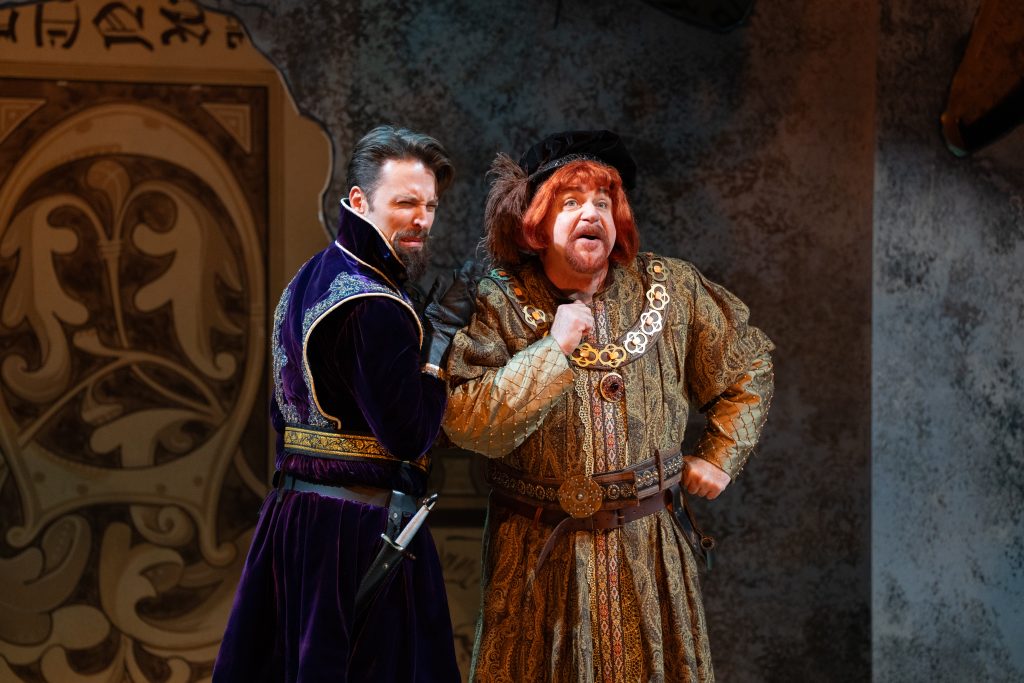
(For a reference, “The Lion in Winter” is a good history lesson about John’s parents, Henry II and Eleanor of Aquitaine, and his relationship with his brothers.)
DeAnte Bryant, spry as the Troubadour, also smoothly played other roles and was the assistant fight director.
The Troubadour’s music and score were composed/arranged by St. Louisan Colin McLaughlin, who also was the music director. He went medieval on 21st century tunes, at times, reimagining pop hits by using old-fashioned instruments like lutes, harpsichords and recorders. The choice of Outkast’s Grammy-winning 2003 song “Hey Ya!” for curtain call was inspired.
Amanda Werre’s expert sound design and Christine Watanabe’s sterling lighting design add to the quality of The Rep show, as their efforts always do.
With its improvisations, goofy additions (yay, Monty Python’s “Spamalot” reference), and vibrant casting, this is not your 14th century ballad come to life. It’s a fresh take – script could have been sharper, though – on a classic story.
While it has commendable heart and humor, “Sherwood” also has a message that always stands the test of time – respect the dignity of the common man, and band together to resist tyranny, especially without fear of “the others” – no time for we vs. them when society is at a moral crisis. Enjoying this popular adventure and energetic effort by all involved is the cherry on top.
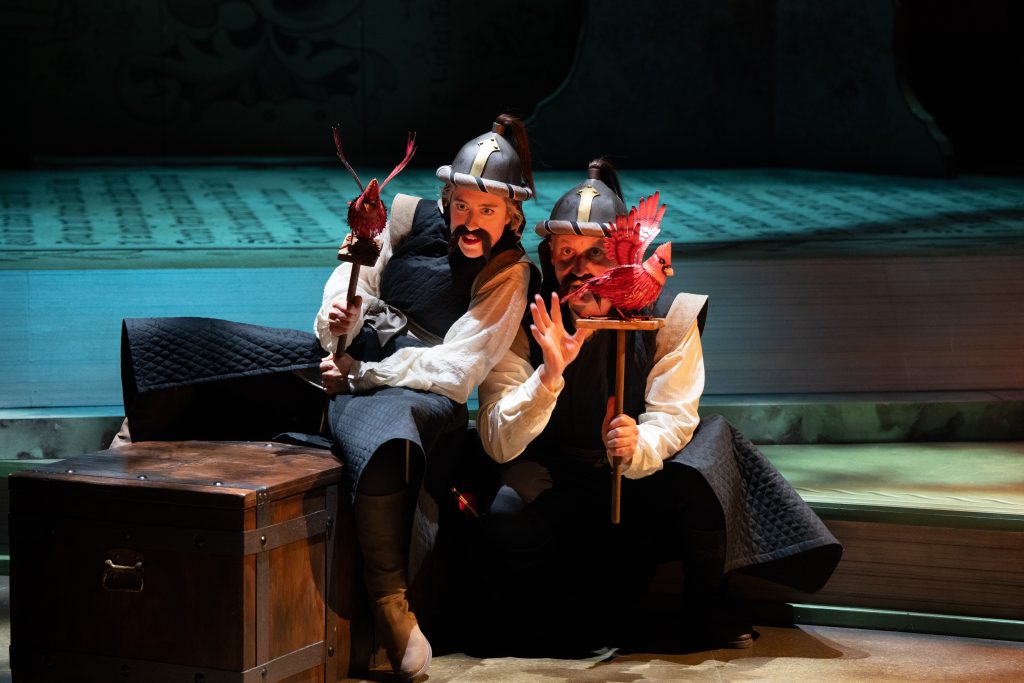
The Repertory Theatre of St. Louis presents “Sherwood: The Adventures of Robin Hood” March 21 through April 13. The play is appropriate for ages 8 and up, with the use of mild innuendo throughout. The production may use strobe lighting, fog, and haze. It runs 2 hours and 5 minutes, including a 15-minute intermission. Performances are on the main stage of the Loretto-Hilton Center on the Webster University campus. For more information: www.repstl.org.
On April 13 at 2 p.m., a special Sherwood Family Day will take place. Post-show festivities include costumed performers from the St. Louis Renaissance Festival and an interactive archery experience.
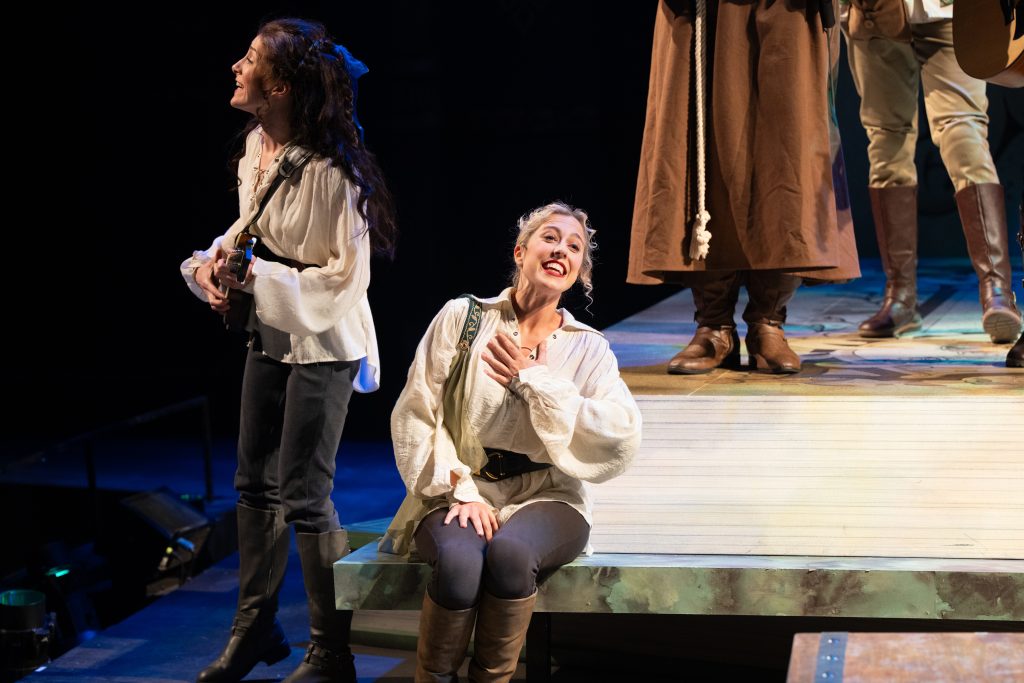

Lynn (Zipfel) Venhaus has had a continuous byline in St. Louis metro region publications since 1978. She writes features and news for Belleville News-Democrat and contributes to St. Louis magazine and other publications.
She is a Rotten Tomatoes-approved film critic, currently reviews films for Webster-Kirkwood Times and KTRS Radio, covers entertainment for PopLifeSTL.com and co-hosts podcast PopLifeSTL.com…Presents.
She is a member of Critics Choice Association, where she serves on the women’s and marketing committees; Alliance of Women Film Journalists; and on the board of the St. Louis Film Critics Association. She is a founding and board member of the St. Louis Theater Circle.
She is retired from teaching journalism/media as an adjunct college instructor.

